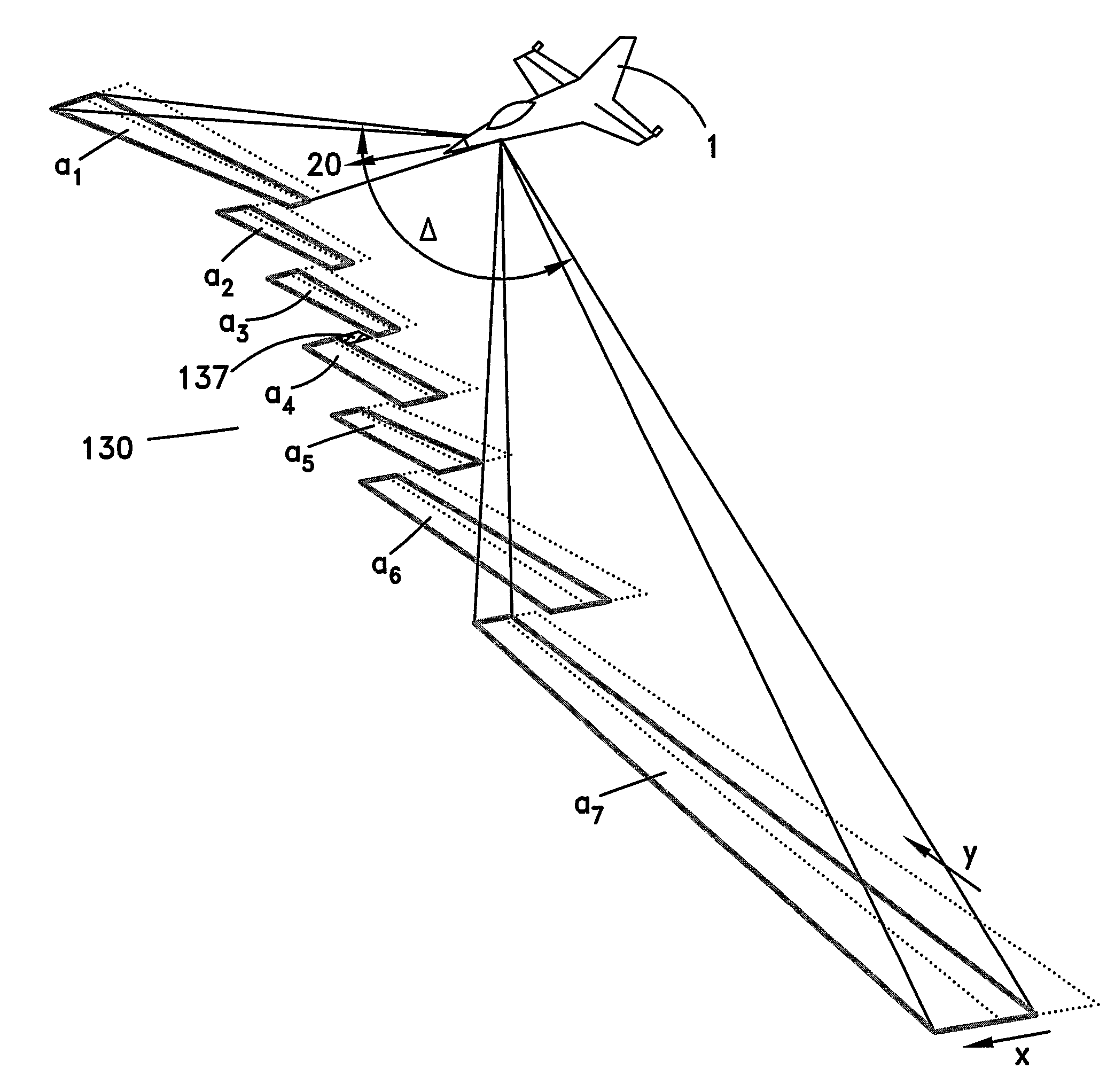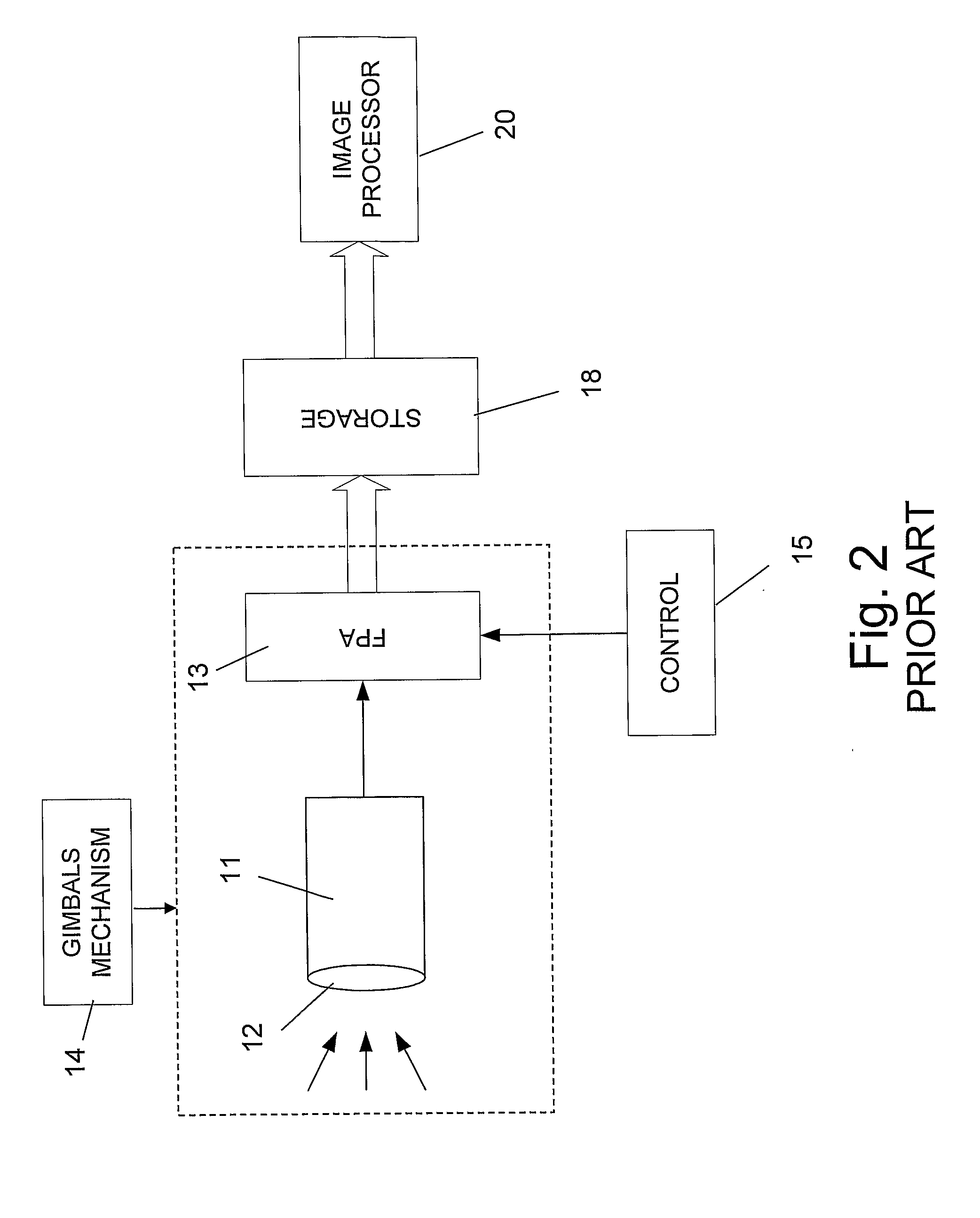Airborne Reconnaissance System
- Summary
- Abstract
- Description
- Claims
- Application Information
AI Technical Summary
Benefits of technology
Problems solved by technology
Method used
Image
Examples
Embodiment Construction
[0047] As said, an object of the airborne reconnaissance system of the present invention is to increase the rate of capturing of terrain images, in a wide field of regard while eliminating the mechanism for changing the view direction of the camera, while still maintaining relatively high image resolution. The invention is particularly useful for carrying out reconnaissance in conditions when the rate V / H is high.
[0048] A typical airborne reconnaissance system of the prior art is shown in FIG. 1. Aircraft 1, provided with an imaging system (not shown) flies in a direction as marked by arrow 20. The imaging system generally comprises a camera for capturing images of terrain 30. Such a camera briefly comprises optics, some type of sensing means such as a focal plane array, and images storage, generally digital storage for storing the captured images. The optics of the system, and the sensing means (generally in a form of a focal plane array) are typically mounted on gimbals mechanism...
PUM
 Login to View More
Login to View More Abstract
Description
Claims
Application Information
 Login to View More
Login to View More - R&D
- Intellectual Property
- Life Sciences
- Materials
- Tech Scout
- Unparalleled Data Quality
- Higher Quality Content
- 60% Fewer Hallucinations
Browse by: Latest US Patents, China's latest patents, Technical Efficacy Thesaurus, Application Domain, Technology Topic, Popular Technical Reports.
© 2025 PatSnap. All rights reserved.Legal|Privacy policy|Modern Slavery Act Transparency Statement|Sitemap|About US| Contact US: help@patsnap.com



